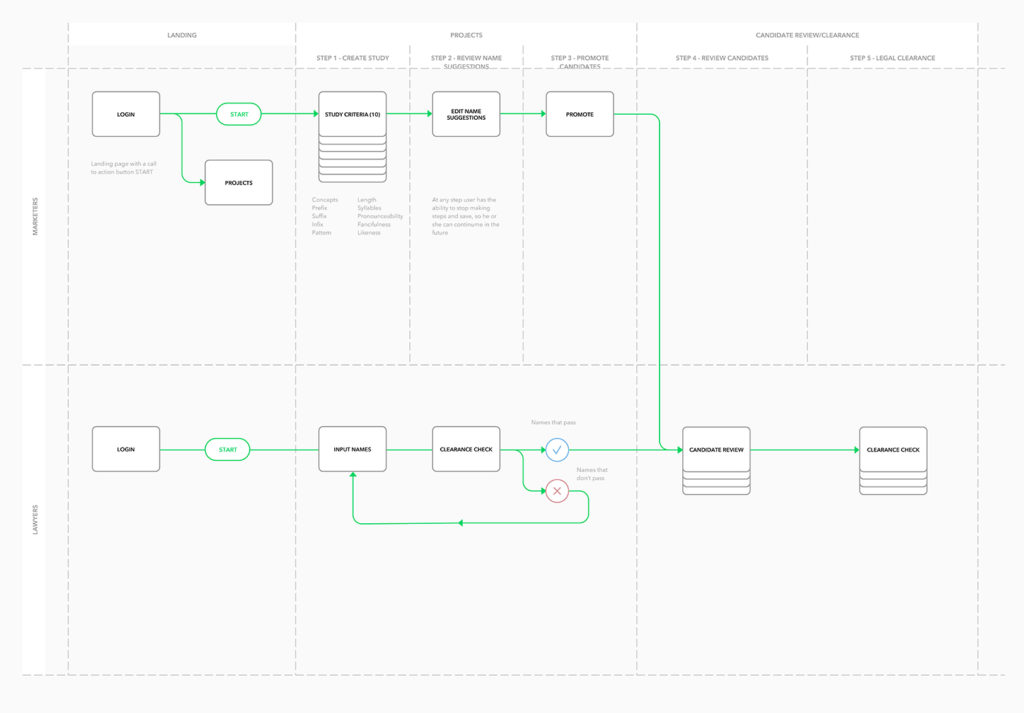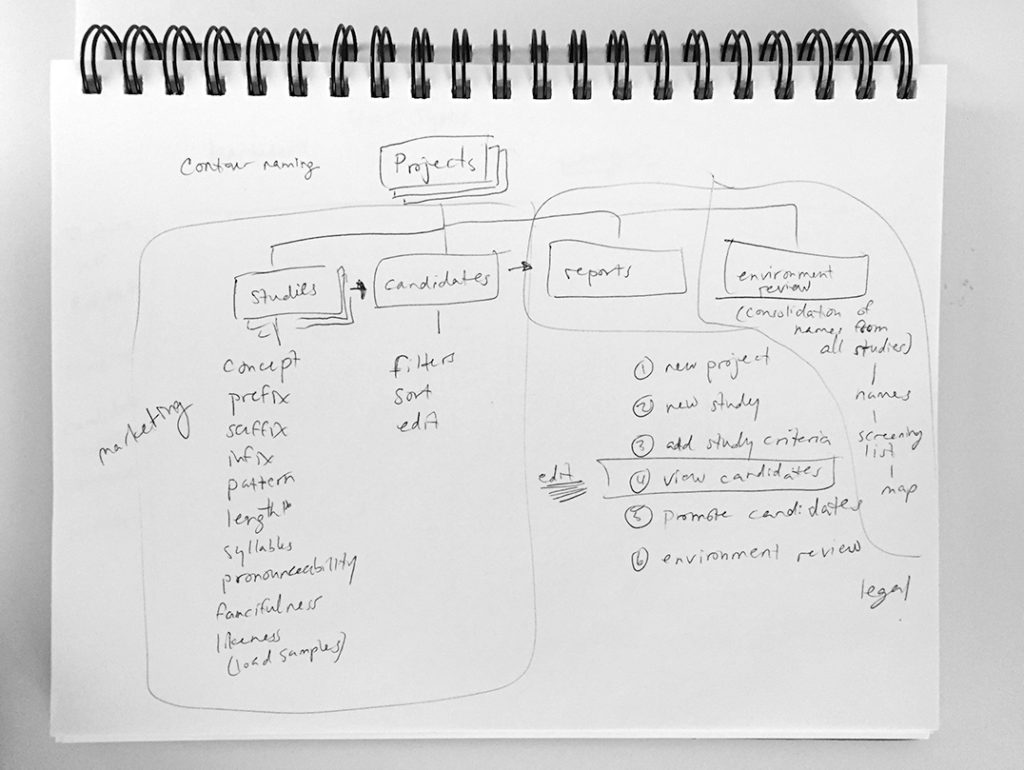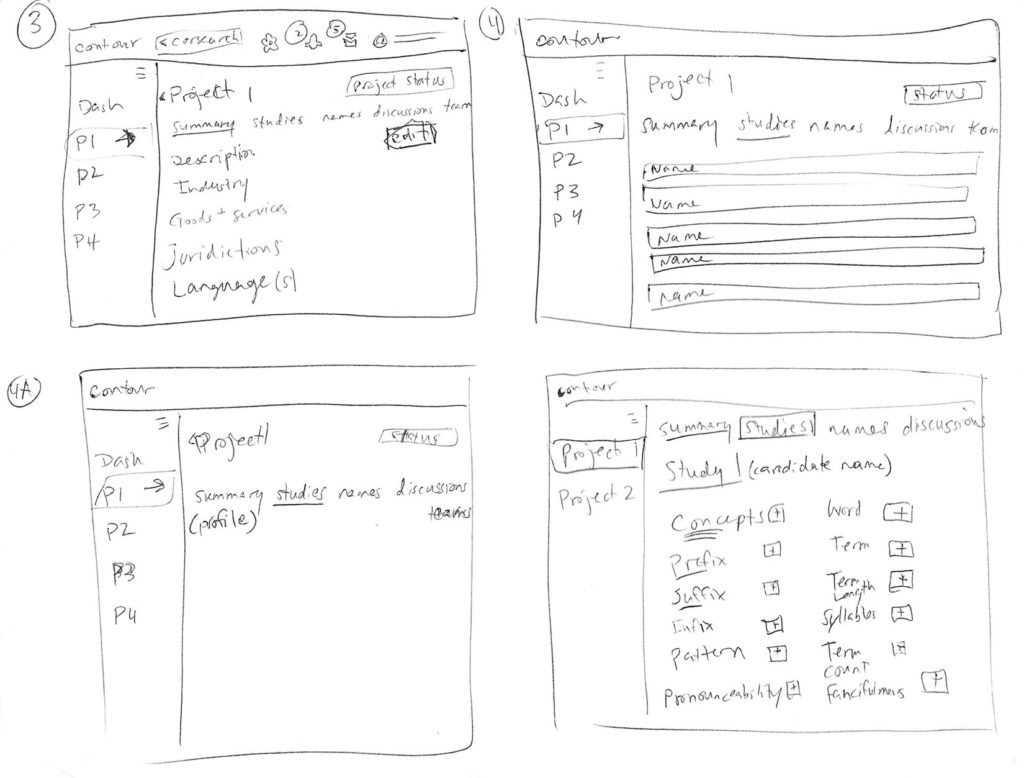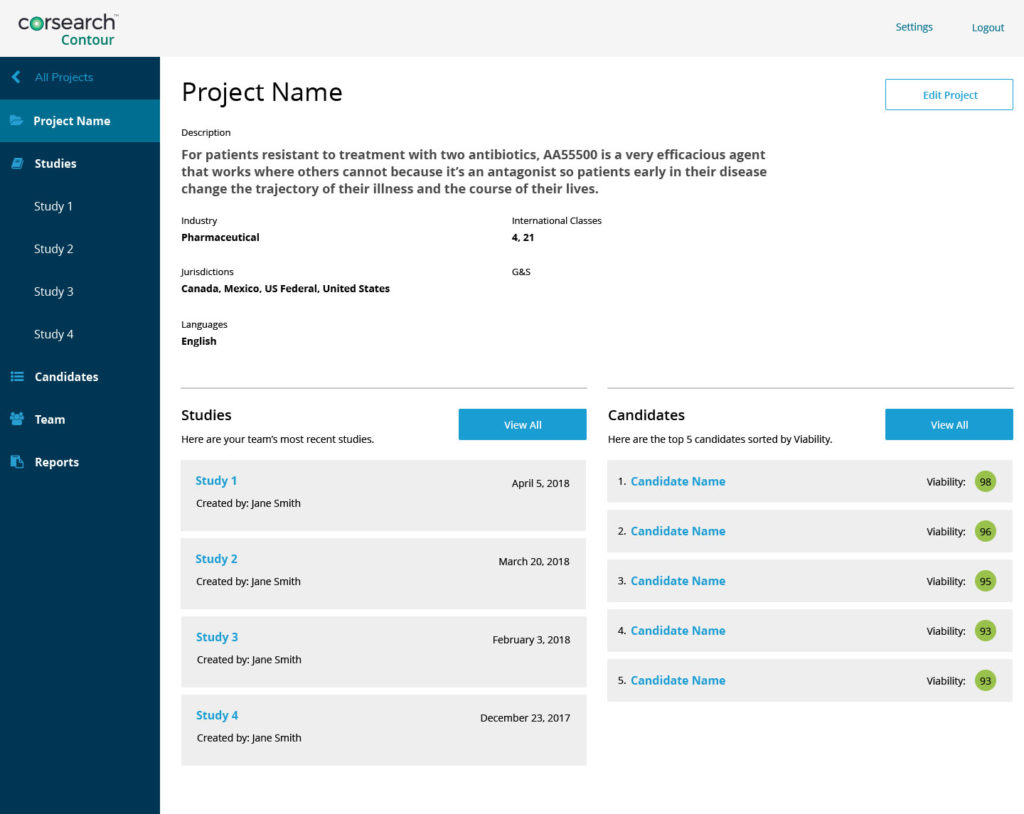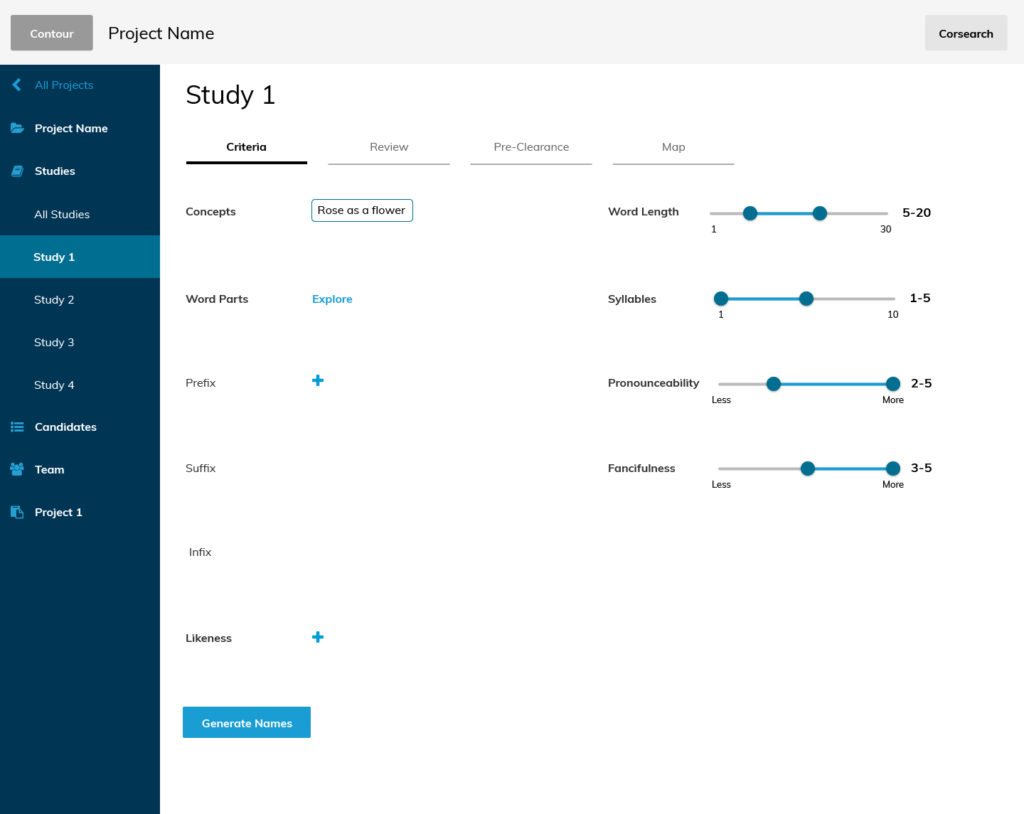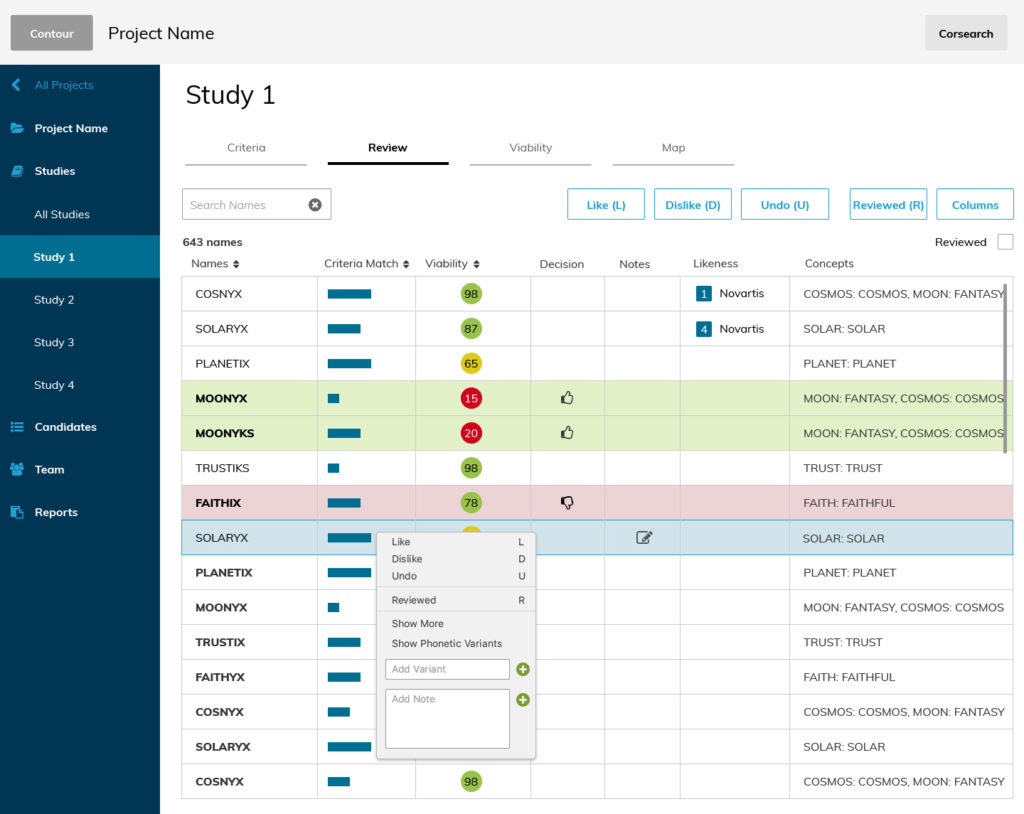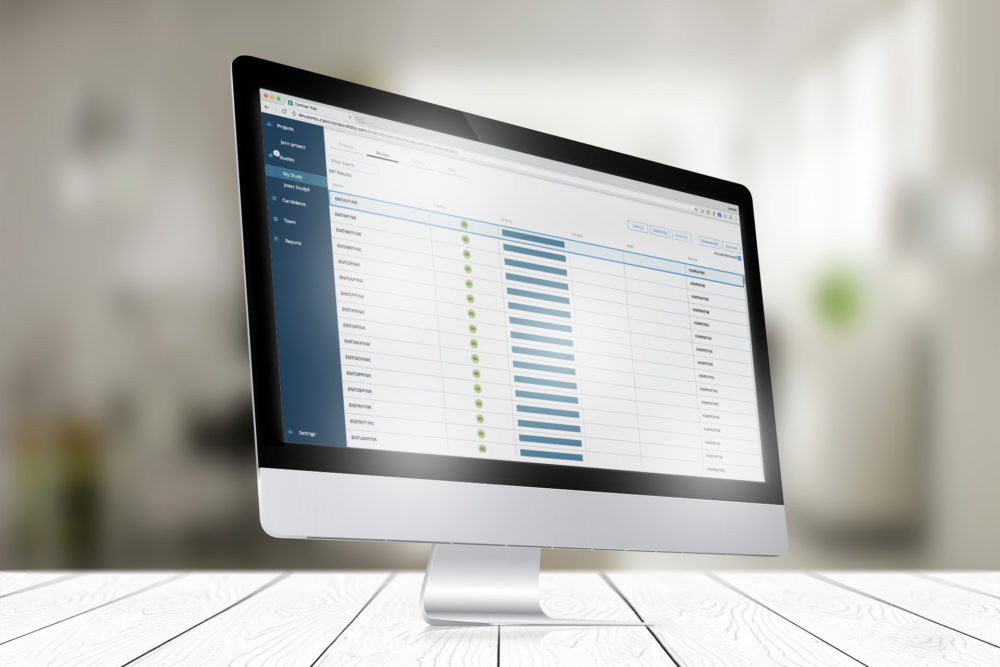I was brought into Corsearch as UX Lead for a new web platform already in development. The platform was brand new and focused on a side of the business that was somewhat unchartered territory. The company saw a chance to break into trademark name generation to add to its core services of name clearance and protection within the pharmaceutical space. Corsearch is a company which focuses on trademark clearance and protection. At a high level, this entails the vetting of different word marks to scope out their legal viability as a new trademark.
Prior to jumping into the project, I spoke to colleagues with whom I’d be working closely. I met with colleagues from relevant lines of business such as product/project managers, marketing, sales, trainers and customer service. These meetings gave me a well-rounded view of the industry and better insight into the client base.
Project Background
“Because of so many inefficiencies in the process, big naming projects often take more than a year to complete.” –Marketing Executive at Novartis
The process of getting to that one magical “it” name can be very long and expensive, especially in the pharmaceutical industry. It can take years to create and properly vet pharmaceutical names. Initially, marketing agencies or professional namers create a list of “between 2,000 and 5,000” potential names. The list gets whittled down to around 10 final candidates and are sent to a paralegal or lawyer to check for existing names that are too similar to the ones selected. If none of the names can be cleared, marketers need to go back to square one. This cycle can occur several times before a final name is selected.
Knowing the Customer
 Initially, the audience for this product was thought to be Corsearch’s base clientele: IP lawyers, paralegals and law firms. But through my qualitative research, I found this to be somewhat inaccurate. From my research, it was clear that lawyers are time-strapped and on the clock with billable hours, and therefore would not take the time to generate names. That is a process that they feel is best left to marketers. Marketing agencies and freelance namers are not a familiar customer base for the company, so I sought to gather more information about this audience.
Initially, the audience for this product was thought to be Corsearch’s base clientele: IP lawyers, paralegals and law firms. But through my qualitative research, I found this to be somewhat inaccurate. From my research, it was clear that lawyers are time-strapped and on the clock with billable hours, and therefore would not take the time to generate names. That is a process that they feel is best left to marketers. Marketing agencies and freelance namers are not a familiar customer base for the company, so I sought to gather more information about this audience.
I spoke with members of our sales team who interact directly with the marketing agencies. Using the information they provided, along with data I collected in speaking directly with lawyers, I decided to compile personas for each user base. I presented them to the team for alignment and to show them why it was necessary to shift focus in target audience for this product. Using this tool, the team aligned on naming agencies being the primary audience with lawyers being secondary.
Through my research, it was clear that name generation is solely a marketing specialty, and clearance is the responsibility of the legal team. With the goal of the product being the ability to save time, earlier collaboration between namers and lawyers was key. I mapped out potential user flows for the lawyer and the marketer to show the most pivotal points for collaboration. The User Flow shows the point of collaboration between the two. Marketing works on name generation initially, and legal is shown only the few most viable options.
Mapping Out the System
The main functions of the system are to create a new project (such as a new drug entering the market), set search criteria, and generate a large, editable list of names. Users can then review the list, edit and even recraft the names as much as desired.
Users consistently expressed the desire to reshape the names in whatever way they chose, and I implemented functionality which allows them freedom to do just that.
The system generates a list of potential names using the defined criteria. Users edit the list and criteria to get to names that appeal to them. The user then selects their favorite names which then go onto the “final” round, which is what’s sent to the legal team for review. One of the major benefits of the system is built-in legal viability insight. More specifically, whether or not the desired name has a real chance of being able to be trademarked.
I iterated on the Criteria and Review screens many times, after several rounds of feedback. One of the more challenging aspects of getting the interactions correct was aligning the data science capabilities with user friendliness. I had to convince stakeholders that user needs dictate the experience as opposed to simply taking advantage of the fancy algorithms. I synthesized the capabilities of the backend and tailored them based on customer feedback.
- 1. Project dashboard
- 2. Studies are created within a project
- 3. Criteria for a new study are set
- 4. List of names is generated based on criteria
Validation
When all is said and done, what this system needs to do to prove its meddle in the marketplace is generate inspirational names. Names which are not only inspirational, but also take into account many intricate details of the FDA’s strict guidelines.
The system was beta tested with marketing teams. Users were interested In the product, but product positioning was still an issue. Another factor our testers looked for was the quality of the creative, or how much they liked the names being generated.
Feedback was positive on the ease of use and having so much flexibility to craft and recraft names in the list.


